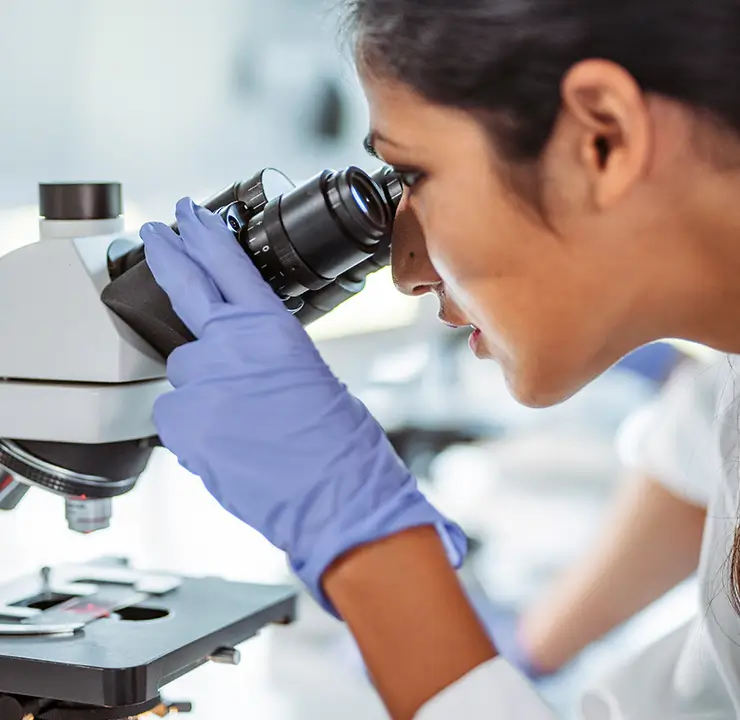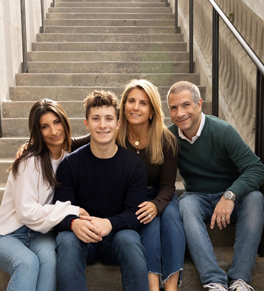
Mohs surgery
If you have skin cancer, UCI Health offers expert Mohs surgery for precision treatment and optimal recovery.
At UCI Health, we understand that a skin cancer diagnosis can be overwhelming.
Our Mohs surgery team is here to provide you with personalized, compassionate care, ensuring you receive the best treatment while preserving your skin.
Our approach to Mohs surgery
Mohs surgery is a specialized technique designed to treat skin cancer by removing cancerous cells layer by layer.Not everyone is a candidate for Mohs surgery. At the UCI Health Skin Cancer Program, we take a personalized approach when deciding if Mohs surgery is right for you. We understand that every skin cancer case is unique, so we discuss the specific characteristics of your tumor along with your goals and preferences.
This tailored conversation helps us choose the most effective treatment for you, whether that’s Mohs surgery, a scrape and burn method or a topical cream. By focusing on your individual needs, we ensure that your care is as effective and comfortable as possible.
With dermatologic surgeons, pathologists and support staff collaborating seamlessly, you can trust you’re in capable hands throughout the entire process.
Who is Mohs surgery for?
Mohs surgery is used to treat:
- Basal cell carcinoma
- Squamous cell carcinoma
- Melanoma (in certain cases)
- Other rare skin cancers
It’s mostly used for:
- Skin cancer in cosmetically sensitive areas (like the face or ears)
- Skin cancer that returns after being treated
- Aggressive or fast-growing tumors
- Skin cancer that covers a large area
- Skin cancer that has unclear borders
How is Mohs surgery different from regular skin cancer removal?
Traditional skin cancer removal usually involves removing the tumor and some surrounding healthy tissue, then sending it to a lab for analysis. Mohs surgery, on the other hand, removes the cancer in layers, with each layer immediately checked to ensure all cancer cells are gone. This method minimizes the removal of healthy tissue.
How long does Mohs surgery take?
The actual removal of tissue is quick, but the process of examining the tissue under a microscope can take time. You might need to wait while the lab processes and examines the tissue. Some procedures can take several hours, but most are completed in one day.

We’re redefining minimally invasive cancer treatments
Find out if Mohs surgery is the right treatment for your condition.
Call 949-824-0606 now to make an appointment.
Benefits of Mohs surgery
Tissue preservation: The surgery is designed to remove only cancerous tissue, so you keep as much healthy skin as possible.
Immediate results: You’ll know right away if all the cancer has been removed, as the tissue is examined on the spot.
Minimal scarring: The technique helps minimize scarring, and we offer options for reconstruction if needed.
Expert care: At UCI Health, you’re in the hands of specialized, expert surgeons. Most of our surgeons are also trained in reconstructive surgery, so we're able to both excise the tumor and reconstruct the wound on the same day.
A gold standard treatment option: For many types of skin cancer, Mohs surgery offers the highest cure rate compared to other treatment modalities.
What to expect with Mohs surgery?
During the procedure, your surgeon removes the visible tumor and a thin layer of surrounding skin, which is then examined under a microscope for cancerous cells.If any cancer remains, the surgeon removes another layer, repeating this process until the margins are clear. This method not only improves your chances of eliminating the cancer, but it also reduces the impact on your healthy skin. This leads to better cosmetic outcomes.
We then reconstruct the area around the excised tumor to preserve normal function and maximize aesthetics. We may use stitches, a skin graft or a flap, or allow the wound to heal naturally.
What happens after my Mohs surgery?
Healing process:
After Mohs surgery, you’ll need to take care of your surgical site to promote healing. Your doctor will provide instructions for wound care, including how to change dressings and keep the area clean.
Pain management:
You may experience mild discomfort. Over-the-counter pain relievers, like ibuprofen or acetaminophen, are typically enough to manage any pain.
Follow-up appointments:
You’ll likely have follow-up visits to check how your wound is healing. Your doctor will make sure no cancer cells remain.
Why choose UCI Health for Mohs surgery
A comprehensive approach
We take a multidisciplinary approach to Mohs surgery, which means our team includes experts from various fields, such as oncology, surgical oncology, plastic surgery and radiation oncology.
This collaboration ensures that you receive the best possible care tailored to your needs. Plus, our bi-monthly tumor board reviews complex cases together, allowing us to discuss different perspectives and create a comprehensive treatment plan just for you. This teamwork helps us provide the most effective and personalized care throughout your journey.
NCI designated
The UCI Health Chao Family Comprehensive Cancer Center is one of only 57 National Cancer Institute (NCI)-designated cancer centers in the United States, and the only such center in Orange County.
For you, that means:
- You’ll receive care from a team of specialists who are up-to-date on the latest techniques and treatments for skin cancer, including Mohs surgery.
- Our affiliation with the NCI ensures ongoing participation in leading cancer research, giving you access to the latest clinical trials and new treatments.
We’re a major tertiary referral center
This means we handle a high volume of complex and challenging tumors. Our extensive experience equips our team to manage a variety of cases, bringing the best practices and techniques to all patients. The insights we gain from treating many people helps us provide the most effective, up-to-date care that’s uniquely tailored to you.
Featured Blog Posts

What it takes to be a kidney donor
The generous act involves a commitment.

A drive to get the best care
When Scott Gertz was diagnosed with colorectal cancer, he was willing to travel.

Living life in high gear
A genetic test gave doctors a clue that an innovative immunotherapy might combat Linda Kiel's late-stage cancer.




